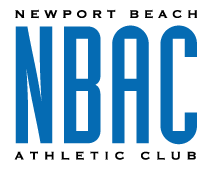Legend has it that the Ancient Greek athlete Milo of Croton was so strong he could break a cord tied around his head with only the force of his brow. In the 6th Century BC, he gained fame as a formidable wrestler, winning six times at the Olympic Games. He supposedly had complete control of his muscles, tensing, or relaxing them according to his opponent’s moves.
How did he get so strong? The stories say he deployed an unusual method. With no protein shakes or dumbbells available, he trained by lifting a male calf. As the animal grew, he repeated the lift until it was the size of a bull. He supposedly then carried it on his shoulders around Olympia, before slaughtering and eating it.
Given that a fully-grown adult bull can weigh 500 to 1,000kg (1,100 to 2,200lb), there is surely some exaggeration in this tale. Croton’s feat would have exceeded the heaviest deadlift on record. But what’s interesting about the story is that his technique echoes a modern principle of training called “progressive overload”, where weight is gradually added over time to build muscle.
Historians have had to piece together how competitors prepared for these events from very few sources, says Clayton Lehmann of the University of South Dakota, who has studied the athletic training period. “We have to use very scattered literary texts,” he explains, as well as more indirect approaches. “Pot paintings are really useful, because they give rather vivid images of how training and competition took place.”
One of the only specific sources about athletic training is called Gymnasticus, written by the philosopher Philostratus the Athenian around the 2nd Century AD. Philostratus didn’t go into that much detail about everyday methods – mainly writing about sport as a noble endeavor – but occasionally he remarks on how some athletes would do curious things like chase animals, bend bars of iron or swim fully armoured in the ocean.
Based on this and other sources, here’s what else we know about how to train like an Ancient Greek athlete:
BUILD STRENGTH WITH ROCKS, PANTRY INGREDIENTS AND ANIMALS
Milo the wrestler’s bull-lifting wasn’t the only way to bulk up. Other tricks included holding four horses at the same time, resisting the effort of someone’s push, or gripping their fists closed. Fighters also pulled, punched and chest-bumped filled bags: the weaker athletes used flour and fig seeds, while the stronger ones used sand.
Wrestlers threw the discus, which were much heavier back then, and lifted weighted rocks with handles. On Thera, a black volcanic stone taller than most men and weighing 480kg (1,060lb) was discovered with an inscription naming the strongman wrestler who lifted it off the ground.
FOLLOW THETETRAD
Thetetrada popular system that shares commonalities with modern techniques that alternate hard workouts with rest. It roughly involved a day of short-intense movements, a day of all-out effort, a day of relaxation and a day of moderate exercise, says Lehmann.
However, it wasn’t universally embraced. Some criticized it for its inflexibility and one athlete died after his trainer forced him to resume following a two-day break.
What’s interesting is that it suggests the Greeks had an idea of the “supercompensation principle”, the modern idea that the body is best prepared for optimum performance within a window a few days after exertion and rest.
CLIMB A TREE, FIGHT A WAR
Outside the gymnasium, some athletes used their physical surroundings to train. Philostratus wrote about the techniques of climbing trees and ropes or pulling carts. Some ran on soft or firm sand to prepare their legs. One boxer from Thanos apparently swam around his island birthplace, a distance of 50km (31 miles), while another was famous for carrying a bronze statue from the temple back to his house when he was only nine years old, according to Christopoulous.
However, Milo took it far, and supposedly died pulling a tree trunk apart with his bare hands. He got stuck in a crevice and was later devoured by either wolves or a lion, depending on which apocryphal tale you encounter.
Athletics was also seen as preparation for the physical tests of the battlefield, and vice versa. As one renowned philosopher put it: “No citizen has any right to be an amateur in
the matter of physical training: it is part of his profession as a citizen to keep himself in good condition, ready to serve his state at a moment’s notice. The instinct of self-preservation demands it likewise: for how helpless the state of the ill-trained youth in war or danger is!”
FOLLOW FADDY DIETS
Before he himself was eaten, Milo of Croton supposedly consumed 8kg (17.6lb) of meat a day. But otherwise, there was no consistent advice for what athletes should eat across the centuries.
At first, the sportsman’s diet was vegetarian and consisted of figs, fresh cheese, pasta and barley, according to Christopoulous, but by the 5th Century BC, beef and pork was more widely eaten.
Trainers experimented with various fads, including cheese-heavy and meat-heavy diets. “Sometimes it would be heavy on protein and sometimes it would be heavy on carbohydrates,” says Lehmann. Eat fish, or don’t eat fish. White bread or coarse bread. “It’s all over the place. I’m sure they had theories for all these things but the science of diet wasn’t anything like what it is today.” But one piece of advice was (and still is) reliable. Lehmann quotes the philosopher who gave the timeless wisdom: “If you want to win at the Olympics, follow the rules and do not eat dessert.”
BBC Future Aug. 5, 2021, by Richard Fisher




